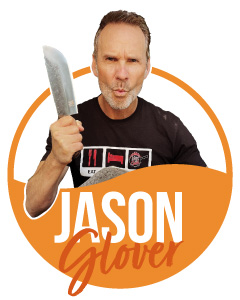Charcoal Grill FAQ

The charcoal grill is one of the most classic and recognizable grills out there. From its classic features to its signature smoky smell, a charcoal grill is a great grill for your next great meal. Charcoal grills are versatile in their designs, giving you endless possibilities.
For those who are new to charcoal grilling, it can be a little confusing to understand what these grills are and how they work. To help you out, our grilling experts have gathered some of the most frequently asked charcoal grill questions and answered them.
What’s the best way to light charcoal?
We recommend using a charcoal chimney or electric starter. With a charcoal chimney, simply fill it with your choice of charcoal and light it with tinder underneath. Once lit enough, the charcoal into the grill. On the other hand, electric lighters are great ways to light your charcoal free of any chemicals. Simply fill your grill with your favorite brand of charcoal and light the charcoal at a few different points and done!
What’s the difference between lump charcoal and charcoal briquettes?
The difference between lump charcoal and charcoal briquettes is very simple. Lump charcoal lasts longer than charcoal briquettes because they burn slower and does not contain any additives, so they leave little to no ash behind afterward. In comparison to lump charcoal, charcoal briquettes burn faster but are made with fillers, accelerants, binders, and other factors that often result in the briquettes cooking with a chemical taste.
Is lump charcoal more natural than briquettes?
Yes, lump charcoal is more natural than charcoal briquettes. Created from wood burned at high temperatures with little to no oxygen, lump charcoal is simply burned wood that have been reduced down to the carbon state while also keeping its original shape. No additives or chemical enhancements are added to the wood as it burns or afterward. This results in a cleaner burn that is far easier to light and produces less ash.
Does lump charcoal burn hotter than briquettes?
While charcoal briquettes are enhanced with additives for a faster burn, they do not compare to lump charcoal. Lump charcoal possesses a hotter and faster burn than briquettes. However, do keep an eye on the lump charcoal as it burns because temperature management can be tricky to maintain due to how easy it can ignite and combustion.
How much charcoal do I need to use?
Your charcoal fuel use varies depending on three major factors: time, grill type, and temperature. For obvious reasons, if you cook longer, you will need to add more coal from time to time. Some grills are more fuel efficient than others, and this is determined by how well the material can absorb and disperse heat. Finally, if you want to cook at a higher temperature, you will need to add more fuel.
How do you do indirect cooking with a charcoal grill?
Indirect cooking is simply when the food is kept off the heat when there is a barrier or space between the fire and the food. When it comes to cooking indirectly with a charcoal grill, you will have to create that space by moving the charcoal over to a side and cooking our food on the side without coals.
How do you cook in zones when using charcoal?
Cooking in zones when utilizing charcoal is not difficult at all. To divide your cooking space into separate areas to cook directly or indirectly, you would just need a grill with a cooking grid and a charcoal reservoir that is wide enough to hold your charcoal to one side and leave the other side empty. This type of setup benefits you by indirectly cooking your meat until the fat is reduced and rendered for tender meat.
How do you control the temperature on a charcoal grill?
There are two methods to control your temperature on a charcoal grill. One, adjust your fuel usage. The more fuel you have, the hotter the heat will be. Two, adjust your airflow. The more air the fuel has access to, the hotter the heat will become. The airflow method is often the standard method most grillers refer to as it is much easier to adjust and will waste little to no fuel, which will also save you money.
How long should it take my charcoal grill to preheat?
For most charcoal grills, the grill is preheated and ready to go once the charcoal fuels have been lit. However, it is important to note that the biggest factor to keep in mind when it comes to preheating your charcoal grill is your grill type. For example, ceramic Kamado grills tend to absorb heat like a sponge in water, so it is very easy to overheat the grill when preheating it.
How should I store charcoal?
When storing your charcoal fuel, you must store it dry, sealed, and away from fire and water exposure. Lump charcoal fuel and water should never meet as it will result in harder combustion and burns, meaning it will be ineffective and no longer of use to you and your grill. Charcoal briquettes, on the other hand, will become loose and gunky when it meets with water.
How do you use wood chips or chunks with charcoal? Do I need a smoker box?
Luckily, it is easy to get the smokey flavor from designated smoker BBQs from a charcoal grill. Unlike gas grills, you do not need a smoker box. All you need to do is, toss your favorite wood chips or chunks right on your coals.
Can I add wood pellets instead of wood chips?
Burning wood pellets on a charcoal grill is not the same as burning wood chips. Wood pellets result in quicker burns but mild smoke. This means you will find yourself standing over the grill the entire time your food is cooking and continuously cleaning the ashes. Wood chips and chunks can withstand heat better and produce more smoke. For this reason, we recommend avoiding pellets and using wood chips instead.
If I am cooking low and slow, how do I add charcoal?
While some models of charcoal grills have an easy and accessible way for you to add more charcoal as you cook low and slow, some models do not. Do not worry if your model of charcoal grill does not have an access door or hinged cooking grates. Get yourself a pair of long-handled charcoal tongs and heat-resistant gloves. Those tools will help you lift the grate to add more fuel while also keeping you safe from burns or injury.
Can I use a charcoal grill in my fireplace?
It is never recommended to use a charcoal grill indoors for safety reasons. Burning charcoal often results in small embers and sparks that fly, and that can result in a fire. Charcoal also produces carbon monoxide as it burns, which is highly poisonous and hard to detect. Other factors such as house fires, hospitalizations, and even death are possible if you attempt to use a charcoal grill or any type of outdoor grill inside your home.
How far from my home should I place my charcoal grill?
For most experienced grillers, the rule of thumb for how far your grill should be from your home is roughly 10 feet. This also includes overhangs and railings. For your safety, keep all combustible items and fuels away from the heat and never grill underneath an enclosure.
How can I prevent embers from flying out of the grill onto my wood deck?
If flying embers are a major concern for you, especially if you are grilling on a wood deck, then our experts recommend investing in a grill mat. Grill mats are the best way to keep your wood deck safe and to prevent any embers from possibly starting a fire. Grill mats also protect your wood deck from the heat of the charcoal grill, keeping your wood deck in perfect condition to entertain your friends and family.
How long does it take for the coals to cool completely after cooking?
Normally, most coals and charcoal fuels take about 24 to 48 hours to completely cool after cooking. To ensure that the coals are cool and for safety reasons, we recommend that you suffocate the coals by cutting off the air supply. After you've cut off the airflow, give it 24 to 48 hours to cool naturally before disposing of the ashes. We also recommend never adding water to charcoal that is still hot. It will damage your grill's metallic surface.
How often should I clean my charcoal grill?
To keep your grill in tip-top condition, our experts recommend that you clean your charcoal grill after every use. It is important that you dispose of the charcoal and ash as charcoal ash can chew through steel when wet and result in rust, damaging your grill. When charcoal ash becomes wet, it becomes "lye," which can gnaw at steel. Even if your grill may have strong protective features, it can still cause rust when left alone. So be sure to clean.
How should I dispose of used charcoal?
Never, ever dump used charcoal or charcoal ash onto the floor as it can cause harm to bare feet or hurt your pet's paws. To dispose of used charcoal properly, simply wrap the charcoal briquette ash or lump charcoal in aluminum foil and toss it into the trash.







